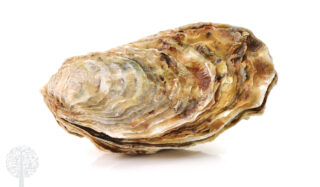Some of the most nutrient-dense and potent organic fertilizers and biostimulants come from oceanic sources. Let’s look at some popular ones, what they offer the garden, and how to use them effectively to supercharge our plants.
Kelp Meal And Kelp Extract
Sometimes referred to as seaweed meal, this ingredient isn’t super high in NPK levels. Still, it makes up for that by offering a wide range of trace minerals, some unique carbohydrates, and perhaps even more importantly, some beneficial growth-stimulating compounds.
Different types of kelp possess individual micronutrient profiles but also vary in the hormone-like compounds they supply. While one may benefit shoot growth, another may be better for root elongation.

Kelp extracts amplify beneficial effects, using various processes to concentrate the biostimulant portion by removing much of the bulk that makes up the kelp meal. The water-soluble end product can be watered in or applied to leaves for a much more powerful result.
Kelp extracts promote root and shoot growth, help with frost resistance, and improve stress response, producing robust plants in even adverse conditions like drought.
Fish Meal, Hydrolysates And Amino Acids
Fish meal is another widespread marine-derived ingredient. When taken from whole fish (including the bones and scales), it is an exceptionally complete nutrition source for the garden.
Fish meal supplies generous portions of nitrogen and a good helping of phosphorous and potassium, trace minerals, and calcium. Applying a little fish meal product provides many benefits in just one ingredient. It also contains many food sources that microbes love to dine on, especially the natural fats for which fungi have shown voracious appetites.
Whole fish hydrolysates are another excellent option. This process takes fish and breaks them down enzymatically to produce an amino-rich liquid concentrate, easily applied through irrigation. Hydrolysates are ideal for providing a complete, microbe-friendly food source.
Raw amino acids are easily absorbed through roots and tissues and have a marked ability to naturally chelate minerals, making them vastly easier for plants to uptake. In addition, because the natural language of plants is carbohydrates and amino acids, this fertilizer requires no conversion for the plant to enjoy all it has to offer. Fish amino acids supply the benefits of hydrolysates but in an even purer form and can be applied as root drenches or by foliar feeding for speedy and notable effects.
Crustacean Meal And Extracts
Crustacean shells provide a considerable amount of beneficial components. The shells are often taken from the prawns, shrimp, crabs, and lobster shells left over from food processing.
Crustacean meal is made by drying and grinding the shells to a fine consistency to be broken down by microflora, providing reasonable amounts of NPK. The shells are composed predominantly of calcium carbonate, so they buffer soil against acidity and provide calcium and other trace minerals to the plant.
Crustacean shells are unique because the bulk of the shell is calcium carbonate, but it is held in a matrix with chitin, similar to how insect shells are constructed. Chitin is an incredible compound, and crustacean extracts take advantage of this by purifying the chitin portion into chitosan.
When plants encounter this substance, they accumulate defense-related compounds, improving the naturally induced resistance to pathogens and pests. In trichome-producing plants, chitosan increases specific biomarkers that boost resin production, resulting in a detectable increase in harvest quality.
Hydrolysis on chitosan extracts yields an amino-rich fertilizer complementary in its nutrient profile to fish amino acids but with different peripheral compounds. As a result, crustacean amino acids can be an excellent addition to the flowering cycle, promoting quality and disease resistance for big, healthy blooms.
Oyster Shells And Seashells

Rich sources of calcium are derived from different hard seashells. Composed of primarily carbonate calcium, finely grinding these and adding them to the soil offers calcium and many trace minerals, especially in the case of oyster shells. Like crustacean shells, oysters and seashells also contain chitin, helping with pH correction and buffering.
So, why wait? The wonders of the deep await you!
nice